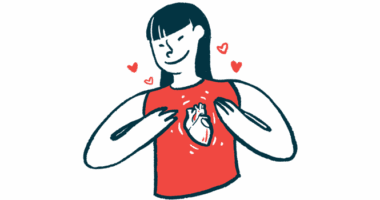Benefits of exercise for the liver
Last updated Feb. 8, 2024, by Susie Strachan

If you are fatigued — a common symptom of liver disease — physical exercise may be the last thing you feel like doing.
But exercising regularly can give your energy levels a boost. It also may help ease the symptoms of liver disease. Exercise, in combination with a healthy diet, is one of the recommended treatment approaches for nonalcoholic fatty liver disease (NAFLD).
Globally, approximately 30% of adults have NAFLD, and in the U.S., it’s the second most common reason for needing a liver transplant.
Aerobic, resistance, and balance exercises can help you maintain a healthy weight and aid in blood sugar regulation. Maintaining a healthy weight and stabilizing blood sugar levels may reduce the amount of fat on your liver and even help manage fatigue.
Talk to your doctor about ways to improve your liver health and quality of life by making exercising safely part of your daily routine.
Benefits of exercise for the liver
A healthy liver plays a crucial role in breaking down toxins and drugs, maintaining blood sugar levels, and supporting your immune system.
There are a variety of reasons someone may develop liver disease, including infections and genetic conditions but also lifestyle-related factors. For example, NAFLD is associated with a sedentary lifestyle and obesity.
Cirrhosis — or severe scarring of the liver — also may cause a reduction in muscle mass. People with advanced liver disease may become frail at an earlier age than what is considered normal. Exercising and being physically active may slow down this process.
Some ways that exercising regularly can help your liver include:
- stimulating the liver’s metabolic processes
- reducing inflammation of the liver
- decreasing fat accumulation in the liver, particularly with NAFLD
- improving the dilation and function of blood vessels, including those within the liver, for a more efficient transportation of blood, oxygen, and nutrients
- decreasing the risk of developing liver cancer and fibrosis
- reducing excessive body fat, which is linked to an increased risk of certain liver diseases.
Doing exercises for liver disease also can boost your mood, which may help prevent mental health issues such as depression and anxiety.
Does exercise help nonalcoholic fatty liver disease?
Both adults and children who lead sedentary lifestyles and are overweight may develop NAFLD. Exercise can help you reduce the amount of fat on your liver.
It is generally recommended that adults exercise moderately for at least 150 minutes to 300 minutes every week, or for 75 to 150 minutes if doing vigorous activity.
Is it safe to exercise with liver disease?
Three main types of exercise are considered safe for people with liver disease: aerobic, resistance training, and balance and coordination.
Before starting any exercise program, it’s important to consult with a healthcare professional. They can assess your health and offer guidance on how to exercise safely.
They likely will take into account the state of your liver, how serious the disease is, and if there are any other health issues.
For example, cirrhosis of the liver may make exercising harder. People used to be told to avoid exercising if they had cirrhosis. But studies have shown that moderate exercise, such as walking on a treadmill, can be considered safe.
Aerobic exercise
Aerobic exercise, also known as cardiovascular or cardio exercise, can increase cardiovascular fitness, enhance lung capacity, and aid in managing weight.
It also has anti-inflammatory effects on the body, including the liver, and can reduce the amount of fat in the liver. All these changes may lead to a better functioning liver.
Examples of aerobic exercises include:
- walking briskly at a pace that increases your heart rate but still allows you to maintain a conversation
- swimming laps
- riding a bicycle or a stationary bike
- group fitness classes such as low-impact aerobics.
Strength training
Resistance exercise is a form of physical activity that helps build muscle. There are various ways to do it, including using free weights, resistance bands, weight machines, or body weight.
For people who have NAFLD, strength training can help counteract the progression of symptoms.
Examples of resistance exercises include:
- using elastic bands to provide resistance in various exercises that target specific muscles
- using the body’s own weight while doing push-ups, squats, lunges, and planks
- using weight machines such as leg press machines, chest press machines, and lat pulldown machines
- using hand weights, such as dumbbells and kettlebells.
For people who have liver disease and are interested in trying resistance training, start with two to three sessions per week. It’s generally recommended to have 48 hours of rest between sessions targeting the same muscle group.
Balance and coordination
Balance and coordination exercises can be beneficial for people with liver disease, especially if you have impaired mobility or are at risk of falling.
Some coordination and balance exercises include:
- yoga, especially poses that emphasize balance
- tai chi
- standing on one leg while holding on to a stable surface for support
- seated marching, alternating raising knees one at a time while sitting in a chair.
Incorporating exercise into your daily routine
By making exercise part of your regular routine, you are supporting the health of your liver, as well as the rest of your body.
Adding more exercise to your life is not as hard as it may seem. Here are some sneaky tips to try:
- Break up the blocks of time you spend sitting with short periods of exercise throughout the day.
- Do a little exercising when you are watching TV, working on the computer, or riding in a car or bus. March in place during the commercials, get up every hour and move around for a few minutes, or walk to the next stop.
- Find an exercise you enjoy doing.
- Partner with a friend or family member to keep you motivated and committed.
- Keep engaged by monitoring your progress with a smartphone app or an activity tracker such as a pedometer.
Liver Disease News is strictly a news and information website about the disease. It does not provide medical advice, diagnosis or treatment. This content is not intended to be a substitute for professional medical advice, diagnosis, or treatment. Always seek the advice of your physician or other qualified health provider with any questions you may have regarding a medical condition. Never disregard professional medical advice or delay in seeking it because of something you have read on this website.
Recent Posts
- New rapid test could accelerate hepatitis C diagnosis and treatment
- Compound found in honey reduced inflammation in PBC mice in lab
- I have patient compliance to thank for my normal MELD lab results
- Heart complications common in children with PFIC, study finds
- Soaking in the season of joy is extra special this year
Related articles





